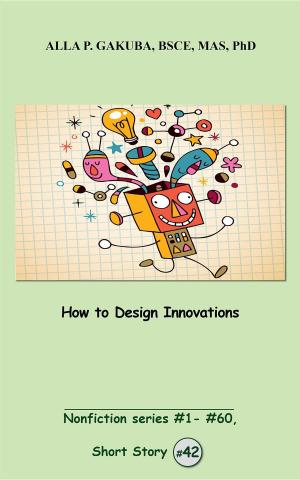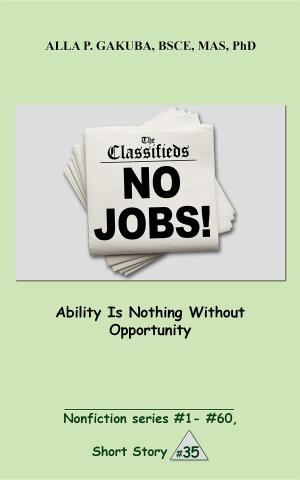Everything Has a Limit. Or, How Much Stress Can Our Brains and Bodies Take?
SHORT STORY #25. Nonfiction series #1 - # 60.
Nonfiction, Health & Well Being, Psychology, Emotions, Science & Nature, Technology, Engineering| Author: | Alla P. Gakuba | ISBN: | 9781943131556 |
| Publisher: | Know-How Skills | Publication: | December 4, 2016 |
| Imprint: | Know-How Skills | Language: | English |
| Author: | Alla P. Gakuba |
| ISBN: | 9781943131556 |
| Publisher: | Know-How Skills |
| Publication: | December 4, 2016 |
| Imprint: | Know-How Skills |
| Language: | English |
There are several example in this story when the author was faced with huge job problems and must find solutions and then solve it—otherwise her career would be over.
One such problem was: how to design 3.5 miles “a spiral” for the Baltimore Subway, in Baltimore, Maryland. A company won a contract, or a bid – to design the Baltimore Subway. The problem was, they have no engineers who know how to design a subway’s aerial structure— “a spiral.” The company advertised for such engineers in engineering journals across the country. They received no answer. No one ever designed it (not many new subways were built in the USA), and no one wants to risk their profession in trying to design it. So, the company gave to design “a spiral” to—this author—from a scratch.
In the Library of Congress, Washington, D.C., there were 2 books in French about the design of Paris’ subway, in France. The company got these books for the author (she knew French). The author read these books. But, the books were about the philosophy and problems during the design. And not about how to design “a spiral.” In the end a miracle happened—the author found the solution, and then designed 3.5 miles of the Baltimore subway aerial structure.
How she did it is also applicable to many other problems. Her approach, thinking, methods, and how she learned new skills—the reader could find inside of this story.
There are several example in this story when the author was faced with huge job problems and must find solutions and then solve it—otherwise her career would be over.
One such problem was: how to design 3.5 miles “a spiral” for the Baltimore Subway, in Baltimore, Maryland. A company won a contract, or a bid – to design the Baltimore Subway. The problem was, they have no engineers who know how to design a subway’s aerial structure— “a spiral.” The company advertised for such engineers in engineering journals across the country. They received no answer. No one ever designed it (not many new subways were built in the USA), and no one wants to risk their profession in trying to design it. So, the company gave to design “a spiral” to—this author—from a scratch.
In the Library of Congress, Washington, D.C., there were 2 books in French about the design of Paris’ subway, in France. The company got these books for the author (she knew French). The author read these books. But, the books were about the philosophy and problems during the design. And not about how to design “a spiral.” In the end a miracle happened—the author found the solution, and then designed 3.5 miles of the Baltimore subway aerial structure.
How she did it is also applicable to many other problems. Her approach, thinking, methods, and how she learned new skills—the reader could find inside of this story.















